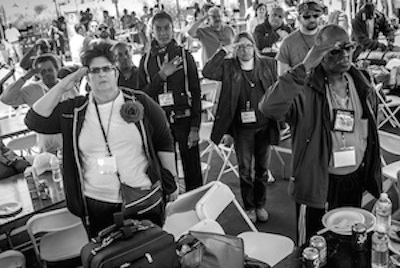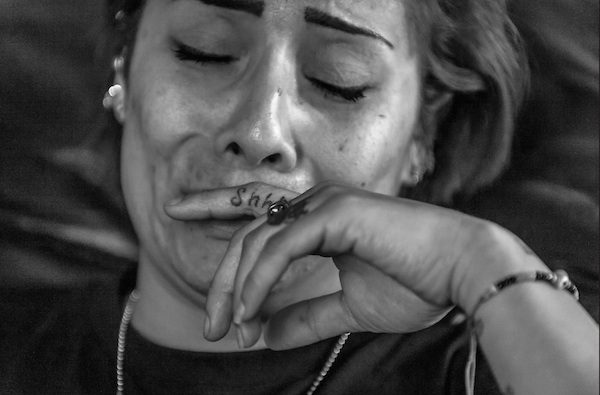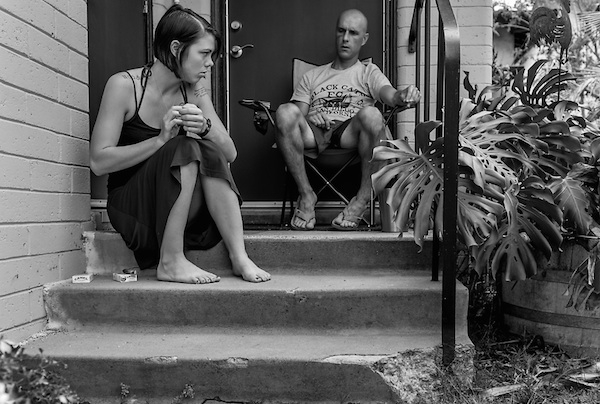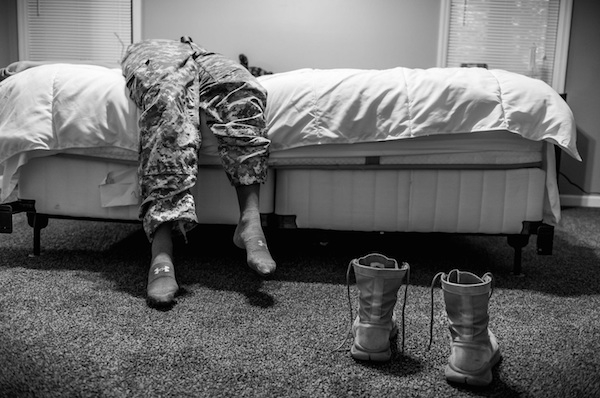Photographer Profile - Mary Calvert: "It's sad to think that this could become my life's work"

|
|
|
Calvert was a newspaper photographer for two decades, often working on human-rights stories about women in the developing world. She has described herself as a "triage journalist" telling under-reported stories about people in crisis. But when she was laid off by the Washington Times in 2010, the scope of her photography changed.
"I didn’t have the funds to travel, so I started to look for stories in my own back yard, which is what photographers should all be doing anyway,” she says.
It was a suggestion from her husband, photojournalist Joseph M. Eddins Jr., that first alerted her to sexual abuse in the military. “He said, ‘You should be looking at this issue, because it’s a terrible problem and nobody is doing anything about it,’” Calvert says. “I didn’t really know much about it, so I started to do some research."
She says she was “blown away” by what she learned.
“I came across a statistic from the Pentagon saying that there were an estimated 26,000 sexual assaults in the military in 2012,” she says. “As soon as I read that, I was trying to figure out how I could put a face on this statistic. I thought about doing portraits of sexual-assault survivors, but I don’t really like doing portraits, because while they can be revealing, I think a candid approach tells a lot more about people.”
Her first breakthrough came when she learned that the US House of Representatives and the US Senate were going to hold hearings on the issue.
“I went to the hearings on the House side first, and I looked around the room as women were giving their testimony, and the place was nearly empty,” says Calvert. “I’d been in those hearing rooms many times before. If a baseball player comes to Capitol Hill for some reason, the place is standing room only. But not for this.”
Nevertheless, the hearings gave Calvert the chance to meet the women who were testifying, and she arranged to photograph several of them. They in turn introduced her to other victims of sexual abuse in the military.
“I would spend as much time with them as I could — sometimes spending the night if they allowed it, just so I could be there when the demons came out,” says Calvert.

She documented the demons: “These were people who were carrying around guilt and shame that didn’t belong to them,” she says. “That kind of trauma eats away at people’s lives.”
In Maine, she accompanied an assault victim on an excursion to a local Walmart. “She didn’t usually go out alone, and she was gripping that shopping cart so tightly, and there was a look in her eye that I will never forget,” Calvert recalls. “She ended up getting a service dog that allowed her to get out. It changed her life.”
Calvert’s life changed as well. “Before, at the newspaper, I would go into a country and do a project and come back, get it published, and that would be it. But with the sexual-trauma work, I went down a rabbit hole,” she says. Since 2013 she has been chasing a complex, changing story.
“It’s like I’m peeling an onion. I peel off a layer and I find another layer to the story,” she says. “When I think of all the different places it could go or people I could talk to, it’s sad to think that this could become my life’s work.”
Heartbreaking Story
As a freelancer, Calvert, whose work has appeared in the New York Times, the Washington Post, Stern and other publications, has been able to move forward on her sexual trauma project with funding from a series of grants.
In 2013 she received the Canon Female Photojournalist Award at the Visa Pour l’Image photojournalism festival in Perpignan, France, which financed her early work on the series she called “The Battle Within: Sexual Violence in America’s Military.” In 2014, she received the Alexia Foundation’s $25,000 Women’s Initiative Grant. With that money she took the project in a new direction, documenting homeless female veterans who were victims of sexual abuse while serving in the military.
That series, which was recently named the first-place winner in the Long-Term Projects category of the World Press Photo photojournalism competition, illustrated another fact that had come to Calvert’s attention: Female veterans are the fastest-growing segment of the homeless population in the United States and are four times as likely to be homeless as other women.
“The award goes a long way in validating all the soul and sweat that it took to complete this very difficult and heartbreaking story,” Calvert says.

The story is now evolving again: Calvert is using money she received as a winner of the 2015 W. Eugene Smith Fund Fellowship award — she shared the $5,000 prize with photojournalist Marcus Bleasdale — to look at sexual assaults of men by other men in the military.
“Males are actually the victims in 52 percent of the cases of sexual assault in the military,” Calvert says. “Men have a whole different set of circumstances to deal with. Women can talk about being assaulted, at the least with a girlfriend. But I’ve met men who say, ‘This happened to me 40 years ago, and I’ve never told a soul until now.’ The silent suffering is devastating — you find men who’ve had broken marriages and substance-abuse problems and sometimes served jail terms.”
The process of financing the work has provided Calvert with insights on applying for grants.
“You have to have a very concise proposal,” she says. “You have to come up with an idea and just free-associate on the page—just write it all out. Then you start to edit it into something that is readable and has a clear objective and makes the issue of the subject come alive. Explain how you are going to put a human face on a crisis or issue that you are trying to explore. But you honestly have to care about the issue and the people you are writing about, because if you don’t, it’s going to show.”
Unanswered Questions
Calvert, who took photo courses in college while studying studio art, discovered what she wanted to do with her life on March 30, 1981, when President Ronald Reagan was shot after a speaking engagement at the Washington Hilton Hotel in Washington, D.C. She was in the back yard of her parents’ home in Arlington, Virginia, heard the sirens, grabbed her cameras and, she says, “spent the rest of the day hanging out with the photographers in front of George Washington University Hospital.”
“In four hours I had found my life’s work,” she says. “Photojournalism let me combine my interest in art with my interest in social issues.”
She has family connections with the military: Her father served in the Army — he met Calvert’s mother, an army nurse, while in Korea — and her grandfather was a Navy admiral who during World War II commanded a PT boat skipper named John F. Kennedy. For nearly 20 years, she has been teaching workshops for military photographers.
“Before I started my project,” she says, “I would walk around on these military bases and see bulletin boards that said, ‘Sexual Assault Hotline,’ with phone numbers to call if you’d been abused, and I thought, ‘What do they need that for? Surely that’s not happening here.’”

Her work has left her with unanswered questions.
“I’ve lain awake in bed trying to figure out why in hell this happens — why this is happening in the military and on college campuses. Where in a young man’s development has he learned that this is ok?” she says. “I recently read a report in the Washington Post about United Nations peacekeeping troops who have been raping women in the Central African Republic. And I thought, ‘It’s almost as if there is a world war going on against women.”
One of the best known images from Calvert’s project features US Army Spc. Natasha Schuette, 21, who was pressured not to report being assaulted by her drill sergeant during basic training at Fort Jackson, South Carolina. In the photo, Schuette’s legs are shown as she lies on a bed in her fatigues.
“She let me photograph her in uniform, which was really unusual,” Calvert says. “When she was assaulted, she managed to fight off this drill instructor, who had a reputation for inappropriate behavior with women under his command. She wasn’t the kind of person who would stay quiet about it.”
Because of that, notes Calvert, Staff Sgt. Louis Corral was sentenced to a prison term for assaulting Schuette and four other female trainees.


